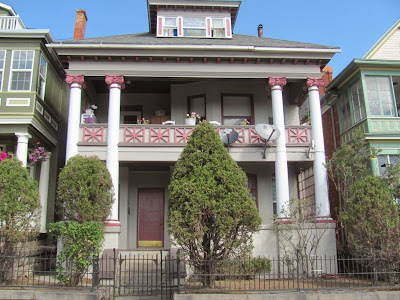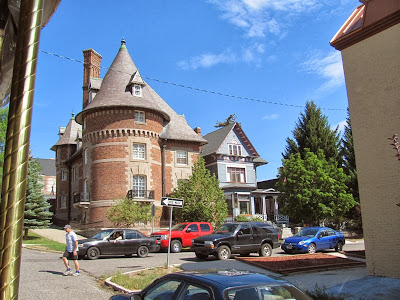I had been told Beartooth Pass was a beautiful scenic drive. Although it was still a ways from where I was staying, I knew I would get no closer this year. It was an all day event and I drove over 200 miles, but it was very scenic. I'm glad I did it.
 |
| The Beartooth Highway runs through Gallatin National Forest. Because of the time of year, most of the National Forest Campgrounds and Picnic areas were already closed for the season. |
 |
| We did stop at one picnic area and wandered down to the ruins of the old flume and power station. The flume and power plant were built in 1916 on the Clark's Fork of the Yellowstone River, but all that remains today are some piers of the flume and some concrete pillars from the power house. Built by the Western Smelter and Power Company, it provided 250 KW of electricity to the nearby mines. The power station only operated until 1925. |
 |
The only business on the route was this Top of the World Store. They had water, drinks, snacks and gift items. I found some socks to purchase. Interestingly, they had no trash facilities. It was pack it out yourself. And their bathrooms were porta-potties. I guess the garbage man doesn't run up here.
|
 |
It was beautiful scenery. Lots of high mountain lakes.
|
 |
| Never did figure out what this for. Almost looks like a ski lift of some type, but this was not a ski area. It just went down to the valley, with no indication there was any purpose at the bottom. |
 |
I think there is a valid reason they do not recommend taking RVs on this road.
|
 |
| Outside Red Lodge, MT, was the remains of the Smith Mine, part of the Bear Creek Coal Fields. In 1947 an explosion in the Smith Mines killed 74 people and was Montana's worst mine disaster. Because of this explosion many changes were made in the mining industry to make it safer. This mine operated from around 1910 to 1953. |
 |
| I made a large loop, going up the Beartooth Highway and returning to Yellowstone via the St. Joseph Scenic Byway. A leisurely excursion, it took 12 hours to travel the 200 miles. Lots of stops and of course lunch in Red Lodge. |












































